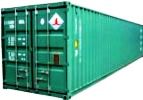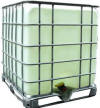| Mubychem Group, established in 1976, is the pioneer manufacturer of Encapsulated Citric Acid, Pharmaceutical, Fragrance & Flavor chemicals in India. Mubychem Group has several manufacturing facilities spread across Gujarat and Mumbai India and world wide contacts and toll manufacturers. We are exporting globally to countries like USA, Canada, Europe, UAE, South Africa, Tanzania, Kenya, Egypt, Nigeria, Uganda, Turkey, Mexico, Brazil, Chile, Argentina, Dubai etc. |
The participating units have one or more accreditations like FDA - GMP approval; ISO-9001 Certified; "REACH"registered; ISO-22000; Kosher Certified;Halal Certified; HACCP. We offer Pure & IP BP USP FCC Food Grade ACS AR Analytical Reagent Grades of Chemicals | |







Encapsulated Citric Acid SDS MSDS Sheet of Manufacturers
Specifications of Encapsulated Citric Acid MSDS Sheet
Encapsulated Citric Acid
Fracturing and Food Grades
Encapsulated Citric Acid MSDS Sheet, SDS Material Safety Data Sheet
Section 1 - Chemical Product and Company Identification
MSDS Name: Encapsulated Citric Acid
CAS No.: Mixture.
Intended Use: Oil & Gas Exploration
Section 2 - Hazards Identification
GHS, Globally Harmonized System Classification in accordance with 29 CFR 1910
Classification according to Regulation (EC) No 1272/2008
Skin corrosion/irritation Category 2
Serious eye damage/eye irritation Category 2A
Specific target organ toxicity, single exposure; Respiratory tract irritation Category 3
Sensitization, Skin Category 1
Labeling according GHS USA & Regulation (EC) No 1272/2008
GHS Label Elements |
Signal Words: Warning
Hazard statements:
H315: Causes skin irritation
H319: Causes serious eye irritation
H335: May cause respiratory irritation
H317: May cause an allergic skin reaction
H334: May cause allergy or asthma symptoms or breathing difficulties if inhaled
Precautionary statements:
P262: Do not get in eyes, on skin, or on clothing.
P264: Wash skin thoroughly after handling.
P280: Wear protective gloves/protective clothing/eye protection/face protection.
P270: Do not eat, drink or smoke when using this product.
P273: Avoid release to the environment.
P302+ P352 - IF ON SKIN: Wash with plenty of soap and water.
P305+ P351 + P338 IF IN EYES: Rinse cautiously with water for several minutes. Remove contact lenses, if present and easy to do. Continue rinsing.
P337+P313 If eye irritation persists: Get medical advice/ attention.
Section 3 - Composition, Information on Ingredients
Chemical Name: Citric acid is the main component.
CAS#: 77-92-9
Percent: Less than 85%. The product is citric acid crystals coated with non-hazardous polymer or hydrogenated vegetable oil.
Section 4 - First Aid Measures
Eyes: Immediately flush eyes with plenty of water for at least 15 minutes, occasionally lifting the upper and lower eyelids. Get medical aid. Do NOT allow victim to rub or keep eyes closed.
Skin: Flush skin with plenty of soap and water for at least 15 minutes while removing contaminated clothing and shoes. Get medical aid if irritation develops or persists. Wash clothing before reuse.
Ingestion: Do NOT induce vomiting. If victim is conscious and alert, give 2-4 cupfuls of milk or water. Never give anything by mouth to an unconscious person. Get medical aid.
Inhalation: Remove from exposure to fresh air immediately. If breathing is difficult, give oxygen. Get medical aid. Do NOT use mouth-to-mouth resuscitation. If breathing has ceased apply artificial respiration using oxygen and a suitable mechanical device such as a bag and a mask.
Section 5 - Fire Fighting Measures
General Information: As in any fire, wear a self-contained breathing apparatus in pressure-demand, MSHA/NIOSH (approved or equivalent), and full protective gear. During a fire, irritating and highly toxic gases may be generated by thermal decomposition or combustion.
Extinguishing Media: Use water spray, dry chemical, carbon dioxide, or chemical foam. Use agent most appropriate to extinguish fire. Do NOT get water inside containers.
Section 6 - Accidental Release Measures
General Information: Use proper personal protective equipment.
Spills/Leaks: Vacuum or sweep up material and place into a suitable disposal container. Very fine particles of Citric acid can cause a fire or explosion. Eliminate all ignition sources. Clean up spills immediately, observing precautions in the Protective Equipment section. Avoid generating dusty conditions. Remove all sources of ignition. Provide ventilation. Spill of Citric acid may be neutralized with lime. Do not get water inside containers.
Section 7 - Handling and Storage
Handling: Wash thoroughly after handling. Use with adequate ventilation. Minimize dust generation and accumulation. Avoid contact with eyes, skin, and clothing. Keep container tightly closed. Avoid ingestion and inhalation.
Storage: Store in a tightly closed container. Store in a cool, dry, well-ventilated area away from incompatible substances.
Section 8 - Exposure Controls, Personal Protection
Airborne Exposure Limits: None established.
Ventilation System: A system of local and/or general exhaust is recommended to keep employee exposures as low as possible. Local exhaust ventilation is generally preferred because it can control the emissions of the contaminant at its source, preventing dispersion of it into the general work area. Please refer to the ACGIH document, Industrial Ventilation, A Manual of Recommended Practices, most recent edition, for details.
Personal Respirators (NIOSH Approved): For conditions of use where exposure to dust or mist is apparent and engineering controls are not feasible, a particulate respirator (NIOSH type N95 or better filters) may be worn. If oil particles (e.g. lubricants, cutting fluids, glycerin, etc.) are present, use a NIOSH type R or P filter. For emergencies or instances where the exposure levels are not known, use a full-face positive-pressure, air-supplied respirator. WARNING: Air-purifying respirators do not protect workers in oxygen-deficient atmospheres.
Skin Protection: Wear impervious protective clothing, including boots, gloves, lab coat, apron or coveralls, as appropriate, to prevent skin contact.
Eye Protection: Use chemical safety goggles and/or full face shield where dusting or splashing of solutions is possible. Maintain eye wash fountain and quick-drench facilities in work area.
Section 9 - Physical and Chemical Properties
Appearance: It is off-white to brownish granules.
Odor: It is odorless.
Solubility: NA
Density: 1.5 gm/cc approximate.
pH: NA
% Volatiles by volume @ 21C (70F): 0
Boiling Point: No information found.
Melting Point: NA
Section 10 - Stability and Reactivity
Chemical Stability: Stable under normal temperatures and pressures.
Conditions to Avoid: Incompatible materials, dust generation, moisture, exposure to moist air or water.
Incompatibilities with Other Materials: Oxidizing agents, sulfides (inorganic, e.g. ferric sulfide, lead sulfide, sodium sulfide), metal nitrates, alkali carbonates, alkalis, potassium tartrate, acetates, bicarbonates.
Hazardous Decomposition Products: Carbon monoxide, irritating and toxic fumes and gases, carbon dioxide and chloro compounds.
Hazardous Polymerization: Will not occur.
Section 11 - Toxicological Information
Citric Acid:
Oral rat LD50: 3 gm/kg; irritation skin rabbit: 500 mg/24H mild; eye rabbit: 750 ug/24H severe.
Carcinogen: Not defined as carcinogen.
Section 12 - Ecological Information
Environmental Fate: No information found.
Environmental Toxicity: No information found.
Section 13 - Disposal Considerations
Whatever cannot be saved for recovery or recycling should be managed in an appropriate and approved waste disposal facility. Processing, use or contamination of this product may change the waste management options. State and local disposal regulations may differ from federal disposal regulations. Dispose of container and unused contents in accordance with local requirements.
Section 14 - Transport Information
Not regulated.
Section 15 - Regulatory Information
USA FEDERAL
Section 302 (RQ): None of the chemicals in this material have an RQ.
Section 302 (TPQ): None of the chemicals in this product have a TPQ.
SARA Codes
CAS # 77-92-9: acute.
Canada
CAS# 77-92-9 is listed on Canada's DSL List. CAS# 77-92-9 is listed on Canada's DSL List.
Citric acid has a WHMIS classification of D2B.
CAS# 77-92-9 is listed on Canada's Ingredient Disclosure List.
WHMIS (Canada): CLASS E: Corrosive solid for Citric Acid.
Section 16 - Additional Information
Disclaimer:
*****************************
Our company provides this MSDS sheet in good faith but makes no representation as to its comprehensiveness or accuracy. This SDS sheet is intended only as a guide to the appropriate precautionary handling of the material by a properly trained person using this product. The above information has been compiled from various sources and has the possibility of discrepancy and being out-dated information. Individuals receiving the information must exercise their independent judgment and do further search in determining its appropriateness for a particular purpose. In no case shall our company be liable to loss or damages by the product user.
*****************************
Encapsulated Citric Acid Manufacturers:
MUBYCHEM GROUP
CHINCHBUNDER, MUMBAI 400009, INDIA
TEL: (OFFICE) 91-22-23774610, 91-22- 23723564. 91-22-23728264
e-mail: anmol@pcmenergy.com

Copyright and Usual Disclaimer is Applicable.
Global or International Encapsulated Citric Acid Suppliers, Exporters, Importers, Manufacturers
If I give you “My Word” Nobody can undo it.
If I sign an “Agreement” my Lawyer will undo it
Perfection is made up of small thing but it is not small.

